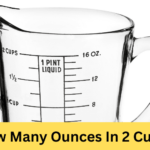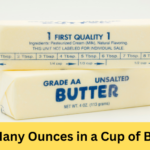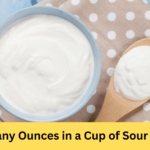Confused about how many ounces in 5 cups? You’re not alone! Whether you’re a culinary connoisseur or an aspiring home cook, understanding the conversion between cups and ounces is key to culinary success. So, how many ounces in 5 cups?
In short, 5 cups equals 40 fluid ounces or approximately 22.05 dry ounces, but there’s more to learn!
Join us on a journey through the world of measurements and discover the secrets behind converting 5 cups into ounces for both liquids and dry ingredients. Get ready to conquer the kitchen with confidence! Let’s dive in!
Understanding the Basics: Cups and Ounces
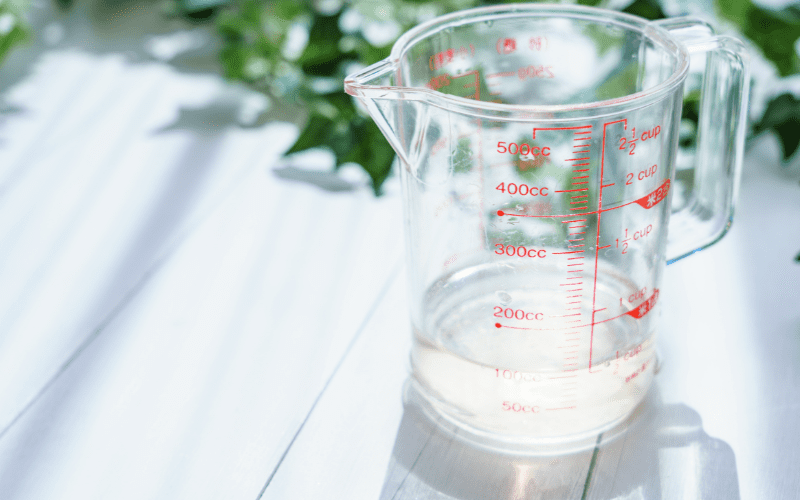
Before we delve into how many oz in 5 cups, let’s clarify the difference between cups and ounces. A cup is a standard unit of volume measurement in both the United States and metric systems. It is commonly used in recipes to measure liquids and dry ingredients.
On the other hand, an ounce is a unit of weight or mass. It is commonly used to measure the weight of both liquid and solid ingredients. In the context of cooking, there are two types of ounces to consider: fluid ounces (used for measuring liquids) and dry ounces (used for measuring dry ingredients).
How Many Ounces in 5 Cups?
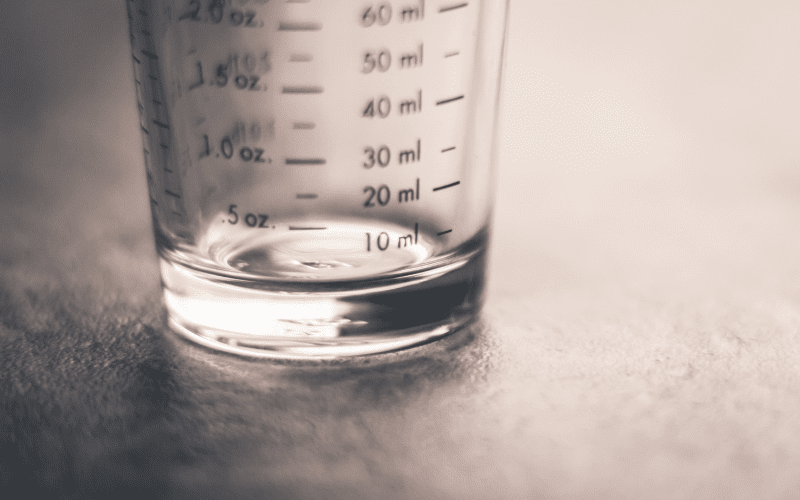
In general, when converting 5 cups to ounces, the answer depends on whether you are referring to fluid ounces or dry ounces.
How many fluid ounces in 5 cups?
When it comes to measuring liquid ingredients, 5 cups would equal 40 fluid ounces. This conversion is applicable to recipes that call for a specific volume of liquid.
How many dry ounces in 5 cups?
On the other hand, when measuring dry ingredients, the conversion can vary depending on the specific ingredient.
As a general rule of thumb, 5 cups of most dry ingredients would amount to approximately 22.05 dry ounces.
However, it’s important to note that the weight can vary depending on factors like density and moisture content. For precise measurements, consult a specific ingredient’s weight chart or use a kitchen scale.
Examples of Common Ingredients
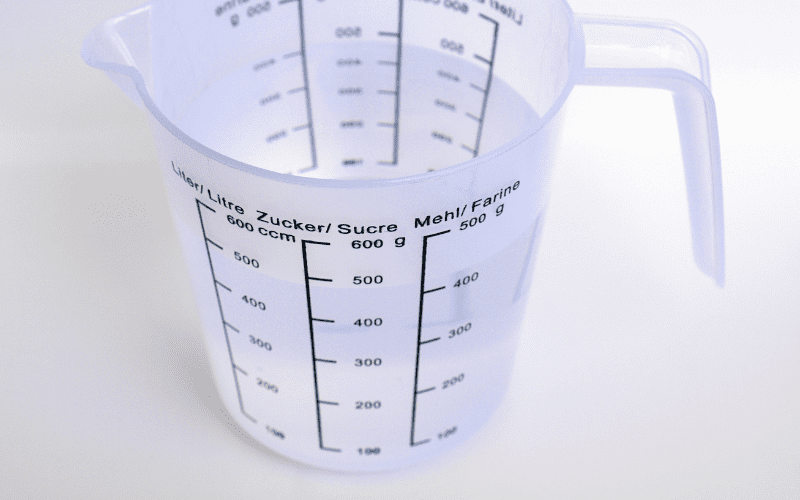
Let’s explore some examples of common ingredients and how many ounces they would amount to when measuring 5 cups:
How many ounces is 5 cups of water?
When measuring 5 cups of water, it would be equal to 40 fluid ounces. Water has a 1:1 conversion ratio between cups and fluid ounces.
How many ounces in 5 cups of flour?
Measuring 5 cups of flour would approximately amount to 22.05 dry ounces. Keep in mind that the weight of flour can vary depending on factors like humidity and how it is packed.
How many ounces in 5 cups of frozen corn?
When measuring 5 cups of frozen corn, it would be equivalent to approximately 22.05 dry ounces. This conversion applies to corn kernels that have been thawed and drained.
How many ounces in 5 cups of spinach?
Fresh spinach, when measured at 5 cups, would weigh around 5.88 ounces. Spinach has a high water content, which contributes to its relatively low weight.
How many oz in 5 cups of coffee?
When it comes to measuring 5 cups of coffee, the conversion to fluid ounces depends on the type of coffee being referred to. If you are referring to brewed coffee, which is a liquid, 5 cups would amount to 40 fluid ounces.
However, if you are referring to ground coffee, which is a dry ingredient, the weight in ounces may vary. The weight of 5 cups of ground coffee can range between approximately 17.6 ounces to 24.6 ounces, depending on the grind size and density of the coffee beans.
How many ounces in 5 cups of oil?
The weight of oil can vary depending on the type of oil used. As a rough estimate, 5 cups of oil would amount to approximately 37.17 fluid ounces.
How many ounces in 5 cups of sugar?
Measuring 5 cups of sugar would approximately amount to 35.27 dry ounces. The weight of sugar may vary slightly depending on factors like its moisture content and granulation.
How many ounces in 5 cups of rice?
The weight of rice can vary depending on the variety and type of grain. As an estimate, 5 cups of cooked rice would amount to approximately 22.05 dry ounces.
How many ounces in 5 cups of butter?
When measuring 5 cups of butter, it would be equal to approximately 40 dry ounces. Butter is commonly sold in sticks or blocks, and each stick typically weighs 4 ounces.
Read also: How Many Ounces In A Cup Of Butter?
How many ounces in 5 cups of milk?
Similar to water, measuring 5 cups of milk would be equal to 40 fluid ounces. Milk has a 1:1 conversion ratio between cups and fluid ounces.
How many ounces in 5 cups of chocolate chips?
When measuring 5 cups of chocolate chips, it would approximately amount to 40 dry ounces. Chocolate chips are commonly measured by volume, which aligns with fluid ounces.
How many ounces in 5 cups of diced tomatoes?
Measuring 5 cups of diced tomatoes would be approximately equal to 40 fluid ounces. Tomatoes, when diced, retain their liquid content, leading to a 1:1 conversion ratio.
How many ounces in 5 cups of almonds?
When measuring 5 cups of almonds, it would be approximately equal to 27.64 dry ounces. The weight of almonds can vary depending on factors such as the variety and whether they are whole or chopped.
How many ounces in 5 cups of shredded cheese?
Measuring 5 cups of shredded cheese would approximately amount to 20 dry ounces. The weight of shredded cheese can vary depending on factors such as the type of cheese and how it is packed.
Related post: How Many Ounces in a Cup of Cheese?
Remember, these are general estimations, and actual weights may vary depending on various factors. For precise measurements, it’s always recommended to consult specific weight charts or use a kitchen scale.
Tips for Accurate Measurements
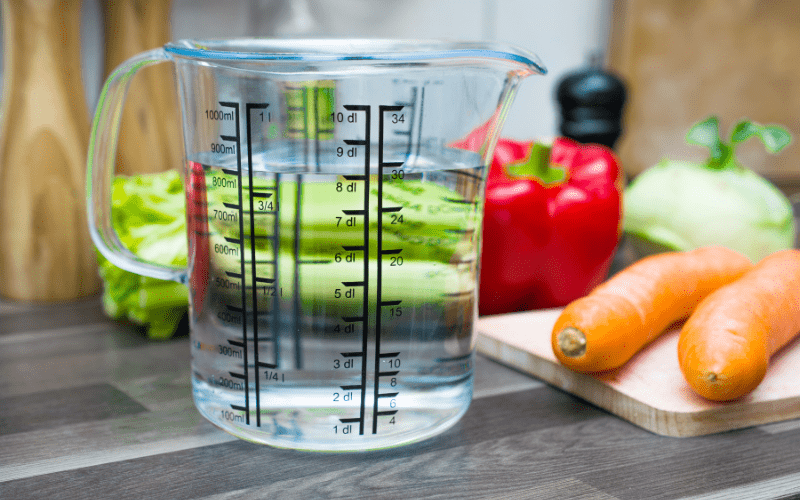
Accurate measurements are crucial in cooking and baking to ensure consistent and successful results. Here are some tips to help you achieve precise measurements:
- Use standard measuring tools: Invest in a set of reliable measuring cups and spoons that are designed for accurate measurements. Using random household items as substitutes may lead to inconsistent results.
- Level off dry ingredients: When measuring dry ingredients like flour, sugar, or cocoa powder, use a straight-edged utensil to level off the excess. This helps achieve a consistent measurement and prevents overpacking.
- Spoon and level brown sugar: Brown sugar tends to clump and pack tightly. To accurately measure it, use a spoon to scoop the sugar into the measuring cup and then level it off with a straight-edged utensil.
- Use liquid measuring cups for liquids: When measuring liquids, use a clear liquid measuring cup placed on a flat surface. Read the measurement at eye level while ensuring the meniscus (the curved surface of the liquid) aligns with the measurement line.
- Convert solid ingredients to weight: For more precision, consider using a kitchen scale to measure solid ingredients. Weight measurements are often more accurate than volume measurements, especially for ingredients like butter or cheese.
- Follow the recipe instructions: Pay attention to the specific instructions in the recipe regarding the measurement technique. Some recipes may call for ingredients to be measured using a specific method (e.g., packed brown sugar).
- Avoid overcrowding measuring cups: Ensure there is enough space in the measuring cup or spoon to prevent ingredients from overflowing or being compressed. Overcrowding can lead to inaccurate measurements.
- Be aware of ingredient temperature: Note that some ingredients, such as butter or certain liquids, may need to be at a specific temperature for accurate measurements. Follow the recipe instructions for best results.
- Double-check conversions: If you need to convert between different units of measurement, use reliable conversion charts or online tools to ensure accuracy. Mistakes in conversions can significantly affect the outcome of a recipe.
- Practice consistency: Develop a consistent approach to measuring ingredients. Use the same techniques each time to minimize variations and improve accuracy.
By following these tips and paying attention to detail, you’ll be on your way to achieving precise and reliable measurements in your culinary endeavors.
Importance of Proper Measurement in Cooking and Baking
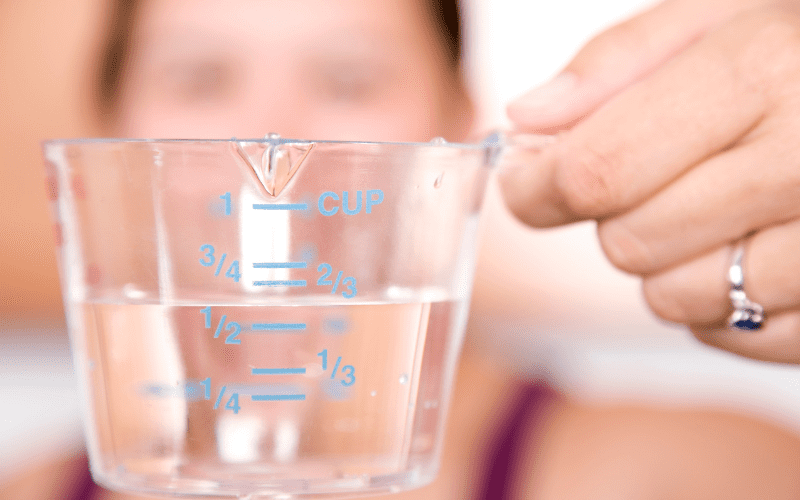
Proper measurement is essential in cooking and baking for several important reasons:
- Consistency: Accurate measurements ensure consistent results. When you measure ingredients properly, you can replicate the same flavors, textures, and overall quality of your dishes each time you prepare them. Consistency is particularly important for recipes that have been perfected over time or when creating signature dishes.
- Recipe Integrity: Recipes are carefully crafted with specific measurements to achieve the desired outcome. Each ingredient plays a crucial role in the overall taste, texture, and structure of a dish. By measuring ingredients accurately, you maintain the integrity of the recipe and ensure that it turns out as intended.
- Balancing Flavors: Precise measurements help maintain the balance of flavors in a recipe. Whether it’s the right amount of salt, sugar, spices, or acidic ingredients, accurate measurements ensure that the flavors are harmonious and well-balanced. Too much or too little of any ingredient can significantly alter the taste of a dish.
- Texture and Structure: Baking, in particular, relies heavily on precise measurements to achieve the desired texture and structure. Whether it’s the right amount of flour, leavening agents, or liquids, accurate measurements help create light and airy cakes, tender cookies, and perfectly risen bread.
- Chemical Reactions: Certain ingredients in cooking and baking, such as baking powder, baking soda, and yeast, rely on specific measurements to trigger chemical reactions. These reactions are responsible for proper leavening, rising, and texture development in baked goods. Without accurate measurements, these reactions may not occur as intended.
- Time and Effort: Accurate measurements save time and effort in the long run. By measuring ingredients properly from the start, you reduce the chances of mistakes and the need to redo or adjust the recipe later. This efficiency is particularly important when working with complex recipes or multiple ingredients.
- Reproducibility: If you’ve ever tried a recipe you loved and wanted to recreate it exactly, proper measurements are crucial. Reproducibility allows you to share your favorite dishes with others or even open a successful food business. Accurate measurements ensure that your creations can be replicated by others with consistent results.
In summary, proper measurement is vital in cooking and baking to maintain consistency, preserve recipe integrity, balance flavors, achieve desired textures, trigger chemical reactions, save time and effort, and enable reproducibility.
By mastering the art of precise measurements, you elevate your culinary skills and enhance the overall dining experience for yourself and those you share your creations with.
Keep reading:
FAQs
Can I use a liquid measuring cup to measure dry ingredients like flour?
While it is not recommended, you can use a liquid measuring cup to measure dry ingredients like flour. However, it’s important to spoon the flour into the cup and level it off for accurate measurements.
Are there any exceptions to the general conversion of 1 cup equals 8 fluid ounces?
Yes, there are a few exceptions. Some recipes may use a different conversion rate for specific ingredients, so it’s always advisable to follow the instructions provided in the recipe.
How can I convert ounces to cups?
To convert ounces to cups, divide the number of ounces by 8. For example, 16 ounces would be equivalent to 2 cups.
What is the weight of 5 cups of cooked pasta?
The weight of 5 cups of cooked pasta can vary depending on the type and shape of the pasta. As a rough estimate, 5 cups of cooked pasta may weigh around 10 to 12 ounces.
How do I measure 5 cups of ingredients if I don’t have a 5-cup measuring cup?
If you don’t have a 5-cup measuring cup, you can measure smaller quantities, such as 1 cup, and repeat the process 5 times using the same measuring cup.
Can I convert dry ounces to fluid ounces?
No, dry ounces and fluid ounces are two different units of measurement and cannot be directly converted into each other. Dry ounces measure weight, while fluid ounces measure volume.
How many cups are in an ounce?
There is approximately 0.125 cups in 1 ounce. However, it’s important to note that the conversion may vary depending on the ingredient being measured.
What is the weight of 5 cups of powdered sugar?
The weight of 5 cups of powdered sugar is approximately 20 ounces. Powdered sugar is generally lighter than granulated sugar.
Can I use a kitchen scale to measure fluid ounces?
While a kitchen scale is ideal for measuring the weight of ingredients, it is not suitable for measuring fluid ounces. For fluid ounces, it’s best to use a liquid measuring cup.
How can I convert cups to metric measurements?
To convert cups to metric measurements, 1 cup is approximately equal to 237 milliliters (ml) or 250 grams (g), depending on the ingredient being measured.
Read also:
Conclusion
In conclusion, understanding the conversion of how many ounces in 5 cups is an essential aspect of successful cooking and baking. Accurate measurements play a vital role in achieving consistent flavors, textures, and overall quality in our culinary endeavors. Whether we’re dealing with liquids or dry ingredients, knowing the proper conversions ensures that our recipes turn out just right each time. So, the next time you find yourself pondering the ounces in 5 cups, remember the importance of precision in the kitchen and embrace the art of measurement to create mouthwatering dishes that will delight both your taste buds and those fortunate enough to savor your culinary creations.


